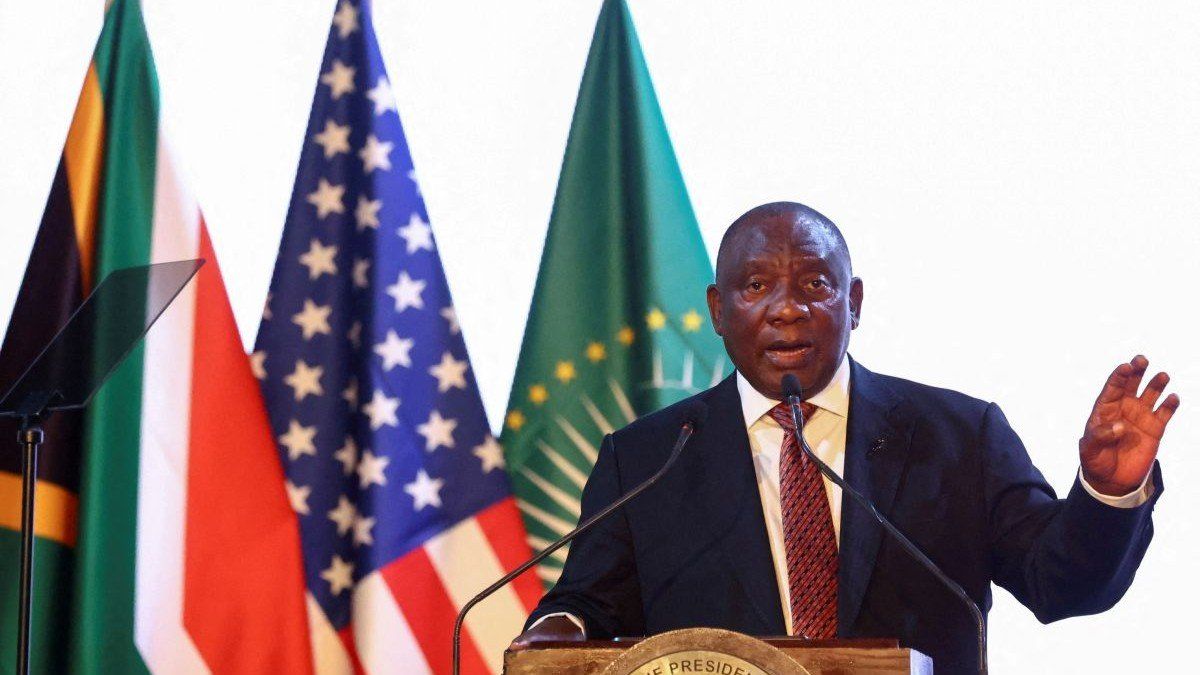South African President Cyril Ramaphosa gestures during the opening of the U.S.-sub-Saharan Africa trade forum to discuss the future of the African Growth and Opportunity Act (AGOA), at the NASREC conference center in Johannesburg, South Africa, on November 3, 2023.
If recent headlines are anything to go by, you’d think that South African President Cyril Ramaphosa’s visit to Washington, D.C. this week is an effort to rebut US President Donald Trump’s belief that white South Africans are suffering a genocide.
In reality, that’s way down the priority list.
“The most important thing [for Ramaphosa] is to show that South Africa is interested in a trade relationship with the United States,” said Johann Kotzé, CEO of the South African agricultural advocacy group AgriSA.
With unemployment soaring past 30% and the economy’s growth rate averaging less than 1% over the last decade, economic issues trump the political ones for Ramaphosa as he spends the week in the US capital.
Like so many leaders who visit the White House these days, the former anti-apartheid activist will hope to reach a trade truce with Trump after the White House came down hard on South African exports with his “reciprocal” tariffs, imposing a 30% duty on the country’s products. It’s not the only trade item on the agenda: The African Growth and Opportunity Act (AGOA) is set to expire in September, and Ramaphosa will be desperate to renew it.
Strike a deal now, or else. Though Trump has temporarily cut the levy on South African products to 10% until July 8, Ramaphosa will seek a longer-lasting reprieve. US Treasury Secretary Scott Bessent has said that individual country rates – the 30% tariff, in this case – represent a ceiling, but also reiterated last weekend that countries must strike a deal or else face higher levies again.
What about AGOA? And what is it? This trade deal between the United States and sub-Suharan states, originally signed in 2000, is set to expire in September. The treaty grants more than 30 countries in the region tariff-free access to US markets for many of their goods, and South Africa has been the principal beneficiary.
What does the United States get in return? If you ask Trump:Nothing! The pact doesn’t require African countries to lower their trade barriers. Former President Bill Clinton, who first signed the deal, saw it as a way to boost growth and spread democratic ideals in Africa.
The political barriers to a deal. Trump’s return to office has created further challenges for Pretoria, both economically and politically. There have been various diplomatic disputes over a controversial South African program to redistribute unused farmland, in many cases owned by white farmers, leading to the expulsion of the South African ambassador to the United States and US Secretary of State Marco Rubio’s decisionto skip the G20 foreign ministers’ summit in Johannesburg in February.
The arrow in South Africa’s quiver. The Rainbow Nation still has something to offer Washington, Kotzé notes. It provides Americans with citrus fruits in the winter months, it’s a source of scarce minerals like platinum – which is vital for the auto industry – and 600 US firms operate in South Africa. What’s more, Pretoria holds significant geopolitical importance in Sub-Saharan Africa, acting as a peace broker or peace keeper in major conflicts in Ethiopia and the Democratic Republic of Congo.
“I don’t want to sound arrogant,” said Kotzé, “but South Africa is strategically well positioned in Africa.”
Tread carefully. When announcing his meeting with Trump, Ramaphosa called for a “reset” in the relationship, an acknowledgement of how the relationship has soured ever since their first beef over South African land use laws in 2018. Unless the South African can sidestep this debate, then it’s more likely that pigs will fly than he escapes Washington with a deal.